by David Clarke | Jul 31, 2012 | All, Insects & Spiders, Italy
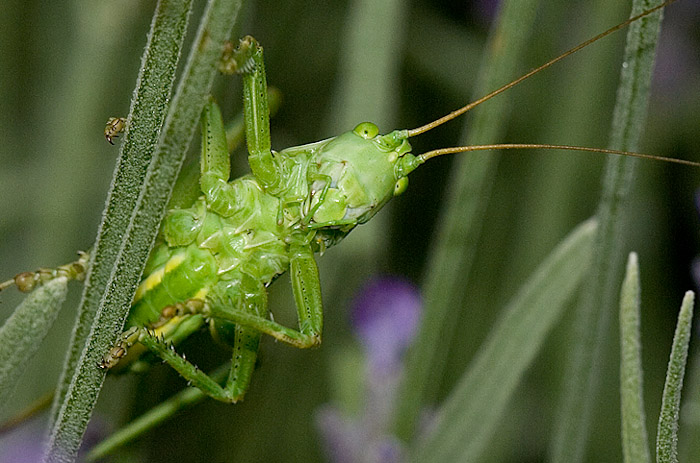
This inquisitive grasshopper was prowling the lavender, doing whatever grasshoppers do, when he spotted me and froze. Perhaps he was checking out the long lens.
Canon 1D MKII with Canon 300mmL f2.8 IS lens and Canon 12mm tube. ISO 200 1/200 at f8
by David Clarke | Jul 29, 2012 | All, Flowers, Italy
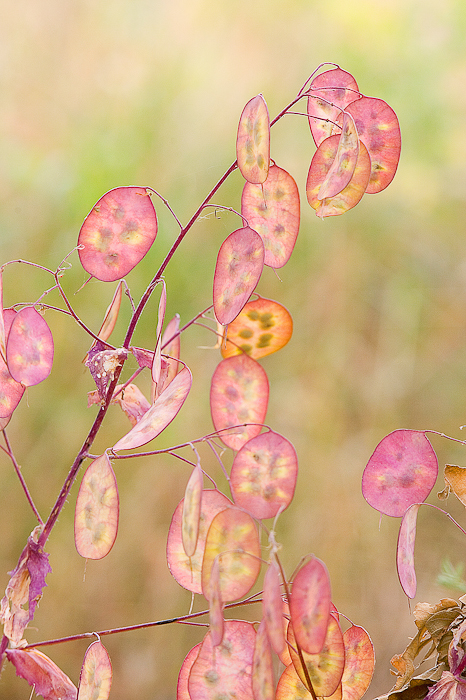
Honesty (Lunaria annua) is a fairly common wildflower in temperate climates. A pretty purple flower, it really comes into its own when the papery seed pods form. It is also known as White Satin, Satin Flower, Money Plant, Silver Plate and Two-Pennies-in-a-Purse. According to wildaboutwildflowers.co.uk, the folklore surrounding it is that for sorcerers, the plant aided shape-changing, flying, finding lost property, unlocking secrets and bringing the dead back to life. It was also used in witches brews and also to dress wounds and treat epilepsy. In Tudor times, the roots were boiled and eaten with meat or grated into salads, while the Victorians painted the seed pods for winter decoration in their homes.
We’ve certainly found that the dried pods are a lovely decoration in a vase indoors, but as for flying, I’m clearly missing something out of the recipe!
The abundance of honesty is our garden varies enormously: some years there is loads in the wooded parts; other years there is very little. However, it is always pretty, even when in an advance state of decay, as shown in the black and white images on the Gallery and Showcase pages.
by David Clarke | Jul 28, 2012 | All, Italy, People
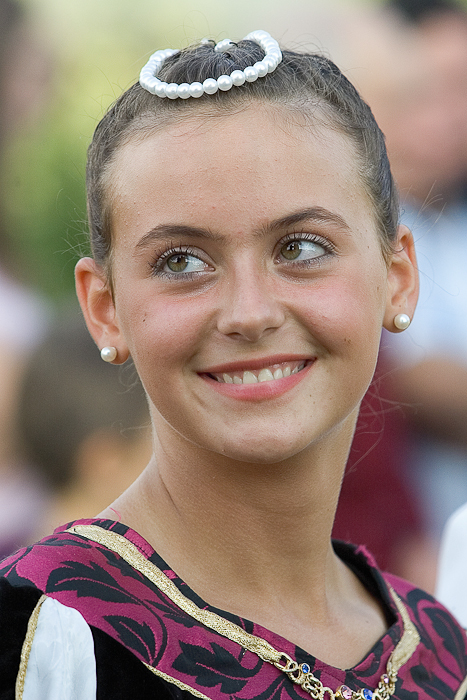
Montecchio is a village in Tuscany on the road between Castiglion Fiorentino and Cortona. As a village, you’d drive through it without noticing it, but up on a hill behind is a medieval castle that opens its doors once a year in September for a medieval pageant lasting two days. It’s a very local affair, attracting people from all over the surrounding area. As well as the main players such as members of the procession, knights, maidens, flag throwers, trumpters etc, there are stall-holders also dressed up in medieval costume preparing traditional doughs as well as the ubiquitous pastas.
This beautiful maiden was part of the main procession that wound its way up from outside the castle and through the grounds, passing trumpeters blowing fanfares, and culminating in a formal ceremony prior to jousts and flag throwing. The wonderful thing about Tuscany is that when the people dress up in the costumes of 500 years ago, they are look like they have stepped out of a renaissance fresco – all the facial features are there.
Canon 1DMkII with Canon 70-200mm f2.8 lens at 190mm; ISO 200 f4.5 1/500
by David Clarke | Jul 27, 2012 | All, Insects & Spiders, Italy
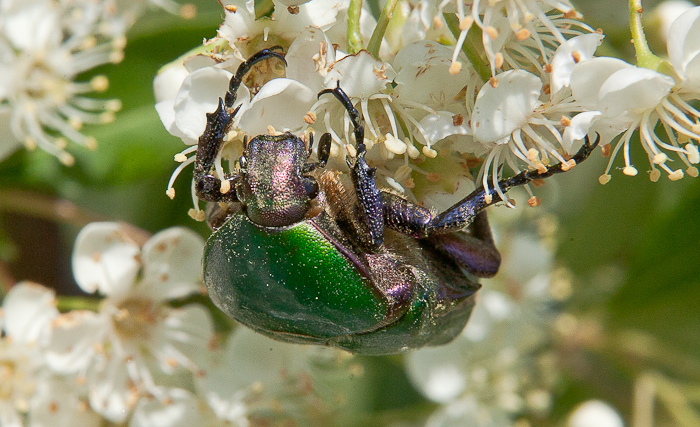
In late May, the pyracanthus ‘Soleil d’Or’ in our garden in Tuscany was in full bloom and alive with insects. Among the invading horde buzzing around me as I approached with my camera was this vivid green beetle who was feasting in delight on the abundance of delicious pollen. It was fascinating to watch it and its companions making their way among the flowers, with legs sticking out in all directions grasping a petal here and a leaf their in order to maintain balance. He is called a rose chafer (Cetonia aurata), the distinctive feature being the small triangular area between the wing cases just below the thorax.
According to Mr Wikipedia, ‘rose chafers are found over southern and central Europe and the southern part of the UK where they seem to be sometimes very localized. They are a very beneficial saprophagous species (detritivore), their larvae are the insect equivalent of earth worms and help make very good compost where they are often found in great numbers.’
Canon 1DMkII with Canon 70-200mm f4L IS lens at 70mm and Canon EB12 tube; ISO400 f16 1/320. Cropped and adjusted in Lightroom
by David Clarke | Jul 25, 2012 | All, Insects & Spiders, Italy
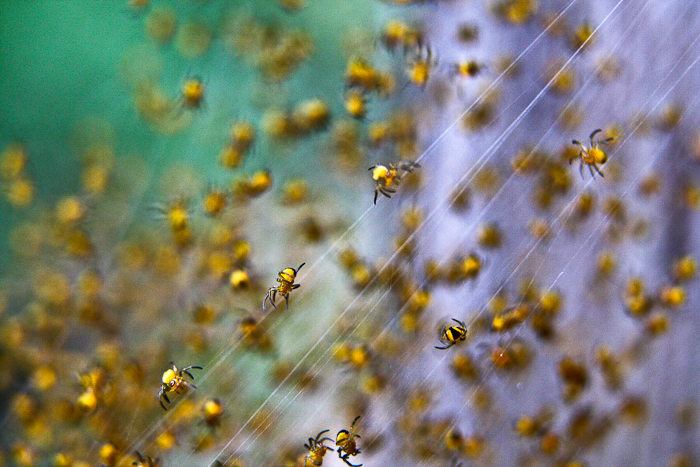
Delicately woven between between the tips of a rapidly-growing vine shoot and the chestnut pole upright of a pergola in my garden in Tuscany, this crop of newly-hatched crop of tiny spiders were flexing their legs and navigating their way around the threads of their home. When I came across the nest, there were around 3-400 of these little fellows – each about 2-3mm long. The weather was deteriorating and there seemed to be a group decision to move to another part of the nest that was higher up the pole.
The challenge with this shot was that the spiders were very small and the group about 3cm deep. Added to that, the numerous threads gave a translucency to the subject that affected the definition of many of the spiders. Not only that, the lighting levels were lousy.
Canon EOS 40D with Canon f2.8L 28-70mm lens at 48mm with Canon 25mm extension tube; ISO800 f5.6 1/160








